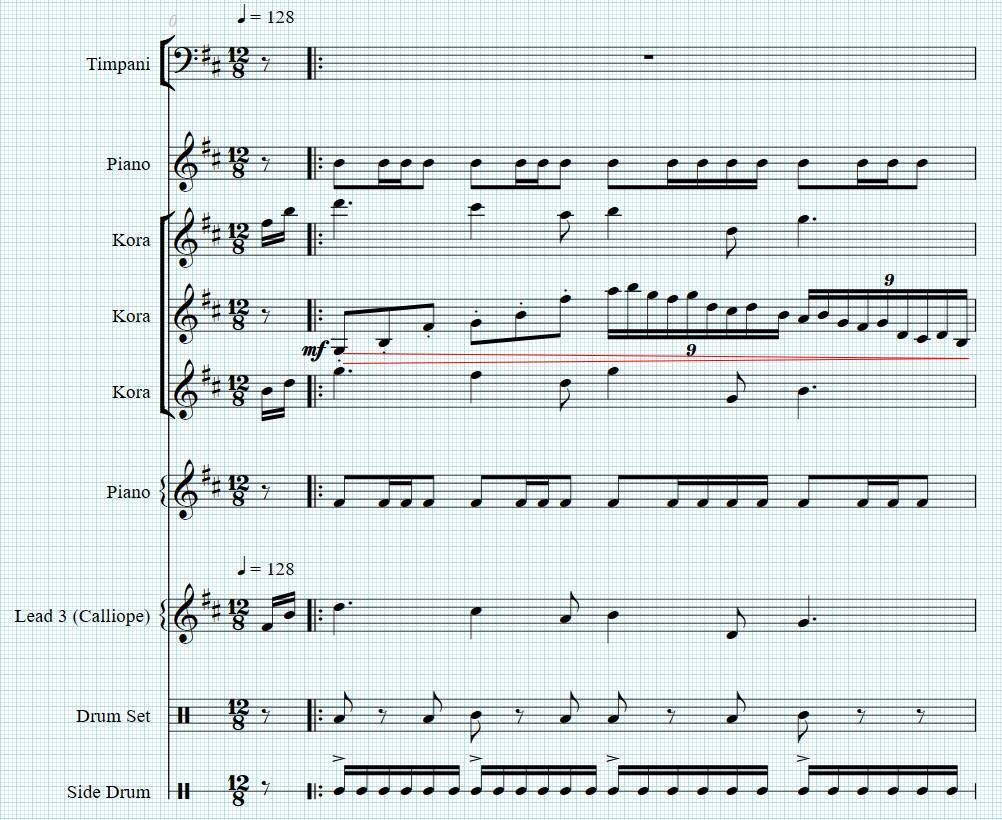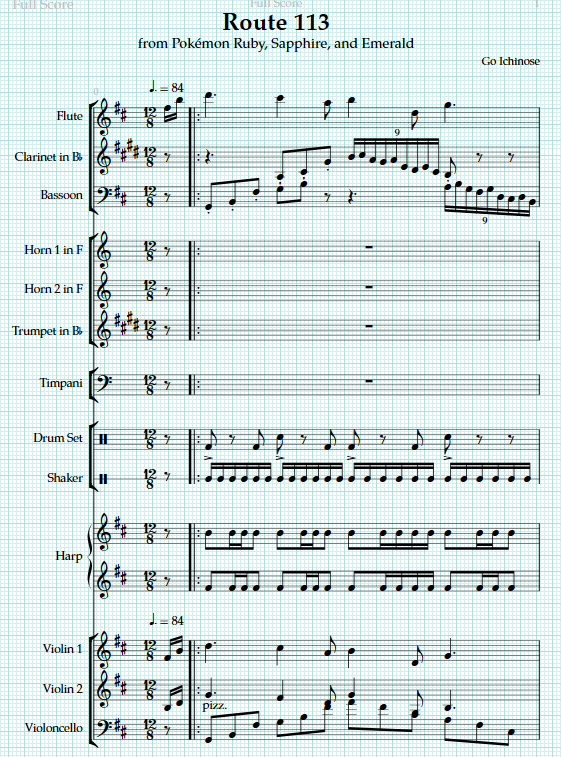Creating nice sheet music from GBA soundtracks, part 2
Ok! My indulgence in this niche hobby continues.
A reminder of where we were at last time:

The first thing to do here is sort out the metronome mark: we’re in 12/8 so it should be using dotted crotchets. Time for some maths … 128 crotchets equals 256 quavers equals 85 and a third dotted crotchets. The closest standard metronome mark to this is 84, so we’ll stick that in.
Next thing is to listen to the real thing to check what kind of instruments we should be using. After listening a few times I’ve got some ideas of what I want in there: the Pokémon tracks often go for a less realistic sound so it’s more a case of making an appropriate decision than finding correct answers. I can plug these into the Sibelius file and have a listen to see if it roughly sounds like the real track. Note to self: you need to have earphones in by this point at the very latest, laptop speakers are no good.
After doing that I have a somewhat passable version:
This is currently for the following instruments: flute; clarinet; bassoon; trumpet; two horns; timpani; drum set; shaker; harp; two violin sections (one possibly to be replaced by viola but we’ll see); cello. That doesn’t seem particularly outrageous.
Next we add all those as new instruments, redo the quaver rest in the upbeat bar (Sibelius always gets a bit confused by these), and then copy over the material from the old staves to the new ones with the assistance of Focus on Staves. Delete all the old parts as you go. I’m splitting the bass part over a couple of instruments, so this is the one that takes the most work at this point; the rest are mostly just a straightforward copy and paste for now.
This is as good a time as any to add the title and composer and import a nice house style. Here’s what the first page looks like after doing that:

And here’s what it sounds like (pretty similar to the previous version, the main difference is that I’ve got more stuff on the bass part so it comes through better):
This is still far from finished! It’s in an almost decent state but it still needs to be made into Actual Music by adding dynamics and articulations, as well as sensible ways of shaping phrases for the various instruments – and there are a few more visual edits to come as well. On to part 3 (quite possibly tomorrow).

